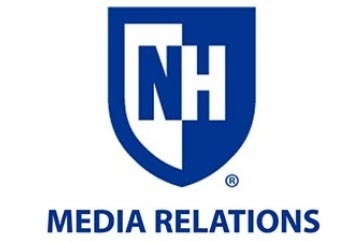UNH Researcher Develops Model for More Equitable Welfare Fund Distribution

DURHAM, N.H. — Subsidy welfare programs are vital for providing families and individuals who are economically disadvantaged the access to essential services like child care, education, healthcare and housing. However, the current formulas in place for this type of sitribution often fail to ensure equitable outcomes across different regions. To address this, a University of New Hampshire researcher, in collaboration with colleagues from other institutions, has developed a novel optimization-based model aimed at improving welfare fund allocation and achieving more equitable results.
In a study published in Manufacturing & Service Operations Management, the model was applied to the Massachusetts child care subsidy program, demonstrating a three percent increase in societal impact while eliminating inequity.
"Equity is about ensuring similar levels of societal impact and outcomes across different service areas, not equal funding to each area," said Wei Wei, assistant professor of decision sciences at UNH's Peter T. Paul College of Business and Economics.
Current formula-based methods distribute funds equally or proportionally across different geographies based on factors such as the number of beneficiaries or service providers in each area. However, this approach doesn't consider the unique challenges within each region.
"In some areas, investing in training for child care providers might improve care quality significantly, while in others, investing in outreach to increase the number of providers accepting subsidies might be more beneficial," said Wei.
The model, when applied to the Massachusetts child care subsidy program, recommended several improvements to address regional disparities:
- For rural areas: Funding mobile child care units and providing incentives to attract more providers, addressing the unique challenges of less densely populated regions.
- For urban areas: Allocating additional resources to cover higher operating costs in cities like Boston, where rent, wages and utilities are typically higher.
- Overall: Implementing a flexible approach that accounts for potential future funds, such as federal grants, allowing for efficient distribution and timely adjustments based on changing needs and resources.
“We presented our findings to the Massachusetts Department of Early Education and Care, and they were interested in our findings," said Wei.
This study opens avenues for future research, potentially expanding the model's application to other subsidy programs and states.
Co-authors on the study include Priyank Arora, assistant professor of management science at the University of South Carolina, and Senay Solak, professor of operations and information management at the University of Massachusetts Amherst.
The University of New Hampshire inspires innovation and transforms lives in our state, nation and world. Nearly 16,000 students from 50 states and 87 countries engage with an award-winning faculty in top-ranked programs in business, engineering, law, health and human services, liberal arts and the sciences across more than 200 programs of study. A Carnegie Classification R1 institution, UNH partners with NASA, NOAA, NSF, and NIH, and received over $210 million in competitive external funding in FY23 to further explore and define the frontiers of land, sea and space.
Latest News
-
July 18, 2024
-
July 9, 2024
-
July 2, 2024
-
June 18, 2024
-
June 18, 2024


















































